
What Makes All Vaccines So Dangerous?
Exploring the forgotten but critically important science of zeta potential
Story at a Glance:
•Since vaccines frequently cause a wide range of side effects this makes it challenging to identify what the common thread between those injuries. One of the best candidates that has been put forward is vaccination triggering microstrokes throughout the body—a process which I believe also underlies many other chronic diseases.
•In the in 1960s (and earlier) a large volume of forgotten research was produced showing that blood cells clumping together was the root cause of a variety of diseases. In parallel, Chinese medicine came to an identical conclusion which has recently been validated by modern scientific instrumentation.
•The science of colloidal chemistry and zeta potential has shown that the primary factor which causes blood cells to clump together are the electrical charges present around them. Many of the most harmful agents in existence (e.g., aluminum or the COVID spike protein) coincidentally also happen to contain a positive charge which is remarkably effective at clumping fluids together.
•I believe impaired zeta potential (especially in the modern era) is the root cause of a wide range of diseases and that treating zeta potential is one of the most effective means to address both acute and chronic illness. Likewise, a strong case can be made that many effective conventional and holistic therapies ultimately work by improving the physiologic zeta potential.
Note: this is a significantly revised version of an article I wrote two years ago on this topic.
Many problems in medicine are ultimately a product of the diagnostic paradigm a physician brings to the situation. This holds particularly true for complex illness, which due to their complexity cannot be solved by the majority of doctors and result in the patient continually struggling with their condition.
A hallmark of complex conditions is that the same disease can cause a wide variety of symptoms depending upon the person and likewise that numerous “complex illnesses” can present with very similar symptoms (e.g., fibromyalgia vs. chronic fatigue syndrome). Because the symptoms are so varied, severe, and inexplicable, doctors who have not been specifically trained to recognize them typically won’t and often will default to assuming they must be psychiatric in nature.
This very much characterizes vaccine injuries, as you can read hundreds reports from over a century ago (which I am currently compiling for an upcoming article) which describe many of the same inexplicable symptoms seen now in those with COVID-19 vaccine injuries, but simultaneously, there is immense variability between each individual report.
In turn, my interest has been in determining what the underlying mechanisms of harm could be. Presently, I believe there are four primary things which underlie vaccine injury:
1. First (as will be discussed in the upcoming article) there is a longstanding issue with vaccinations being improperly produced and contaminated with things that can injure the recipient. This in turn is why vaccine hot lots repeatedly emerge.
Note: some evidence exists (e.g., a DPT vaccine memo revealed through litigation) that this issue was largely “solved” by distributing each lot throughout the country so that it would be much harder to identify the hot ones as injuries would not cluster in a single area.
2. Because vaccines are designed to unnaturally activate the immune system, they can create longterm immunological dysfunction and off target immunity. This most commonly manifests through the immune system attacking the body (there is a lot of evidence tying vaccination to a myriad of autoimmune disorders), but other immunological issues (e.g., varying degrees of immune suppression) are also sometimes observed after vaccination.
3. When cells are threatened, they will sometimes enter a primitive metabolic state to protect themselves where their mitochondria stop performing their normal functions. This state is supposed to be temporary, but some (myself included) believe cells can get stuck in this response, and that an unresolved and persistent cell danger response underlies many chronic and complex conditions. In turn, when the cell danger response is treated, many severe conditions (e.g., those linked to vaccination like autism) have been observed to resolve as well.
4. Vaccines cause moderate to severe impairments of the fluid circulation of the body through impairing the physiologic zeta potential (which causes fluids like blood to clump together) and to a lesser degree by having the white blood cells enter capillaries, where, due to their larger size, they obstruct the flow of blood through the capillary.
In this newsletter, I’ve tried to bring attention to the subject of zeta potential as I believe it underlies a wide variety of chronic conditions, but outside of a few niche areas (e.g., designing lipid nanoparticles for drug delivery or how the ESR test works) there is no knowledge of the concept within medicine. My focus was specifically drawn to the zeta potential concept after I realized many of the mysteries of COVID-19 (and later the vaccine) were a result of the spike protein being extremely disruptive to the body’s zeta potential. In short, I believe that if the zeta potential was instead recognized and understood by the medical system, patient outcomes would significantly improve.
Note: much of this article was made possible by the pioneering work of Andrew Moulden, Melvin Knisely and Thomas Riddick.
Andrew Moulden
Andrew Moulden was a Canadian Ph.D. neuroscientist who focused on childhood development and acquired brain injuries, and then subsequently became a doctor specializing in neuropsychiatry.
During Moulden’s clinical training, he came across numerous cases of young children who developed textbook neurological signs of strokes none of his colleagues recognized, and over time, he noticed some of those children would subsequently develop severe neurological disorders (such as autism or losing the ability to speak). As Moulden began to try and understand what could be causing all of this, it became very clear the initial strokes followed vaccination, sometimes within hours of a vaccine.
Previously, to explain the extremely cruel phenomena of medical gaslighting, I illustrated how well-intentioned doctors typically cannot see signs of a condition unless they were specifically trained to look for them. I believe this is primarily because relatively few doctors have the perceptual capacity to continually monitor the entire patient in front of them (which is necessary for many diagnostic insights) and instead must filter the patient through the diagnostic algorithms they were taught in their medical education.
So, quite remarkably, Moulden was one of the first doctors to realize the same subtle signs doctors and particularly neurologists are taught to look for in adults to assess for signs that a stroke occurred should also be identified in children (as typically doctors only recognize overt signs of a pediatric stroke such as a large facial droop). Because no one diagnoses these less obvious strokes in infants, we are left with a variety of conditions that are written off as the infant being “cute,” or having a disorder of unknown cause (for example, esotropia, a fancy term for the eye turning inwards, affects 2% of the population).
One of the major challenges in science is making the “invisible” visible so it can be researched in a reproducible fashion, and typically the smaller something is, the more challenging this is to do. Fortunately, in neurology that invisibility can be bypassed because when there is a problem somewhere in the brain (commonly as a result of impaired blood flow to that region) the corresponding function that region is responsible for will become disrupted as well. In turn, with appropriate training, a physical examination can often detect that disruption and hence determine exactly where a stroke has occurred.
In many cases, the status of the cranial nerves provides the most accessible window for evaluating the brain, which is why all medical students are taught to cursorily evaluate them (unfortunately they rarely perform the in-depth examinations that can tell you much more about the patient such as the more subtle manifestations of their microstrokes).
Most nerves that travel throughout your body (not counting those that remain within the central nervous system) originate from your spinal cord. The twelve cranial nerves are the exception and instead originate from the brain (with most originating in the brainstem).
The cranial nerves within the brainstem are vulnerable to strokes because of the anatomy of the circulatory system. In most cases, the tissues of the body (especially those that cannot tolerate an interruption of their blood supply like the heart and brain) have multiple sources of blood so that a disruption within one of their blood vessels is unlikely to cause a critical failure. Watershed areas denote locations where that redundancy does not exist, and as a result, strokes are much more common within the watershed areas.
Many of the cranial nerves in the brainstem originate in watershed areas, which allows their dysfunction to serve as an early warning sign blood flow is being disrupted throughout the brain. Additionally, the blood vessels that feed the back of the brain where these cranial nerves are located are narrower than those that feed the front of the brain (20% of cerebral blood flow originates from the back, 80% from the front). This is important because an increased thickness of blood will always reduce blood flow, and that thickening has the greatest impact on smaller blood vessels (e.g., the narrower arteries that feed the brainstem).
The cranial nerves that typically indicate the presence of vaccine-caused micro-strokes (due to their less robust blood supply) are those responsible for controlling the movement of the eyes and facial muscle tone. The three nerves originating from the watershed areas most commonly affected by vaccine microstrokes are as follows:
•Cranial Nerve VI: This nerve is responsible for controlling the muscle that makes the eye look outward. When a deficit is present, the eye will often look inwards at rest (less common), and when both eyes look from side to side, the affected side will often jump rather than moving in a slow continuous motion like the unaffected side (more common).
Note: I believe CN VI is the nerve most frequently affected by COVID-19 injuries.
•Cranial Nerve VII: This nerve is responsible for controlling most of the muscles in your face and one of the most commonly associated issues with this nerve is Bell’s Palsy, where one side of the face droops downwards. Less easily recognized facial changes can also occur, such as a flattening of the nasolabial fold, or the development of a crooked smile. In a previous article that discussed Justin Bieber’s recent vaccine injury, I showed how historical photography demonstrates that the age of vaccination has caused widespread cranial nerve damage that has resulted in asymmetrical faces going from being the exception to the norm.
Note: CN VII damage is considered to be the most common vaccine injury to the cranial nerves. I believe this is because CVII damage is immediately noticeable, whereas you typically have to specifically look for CN VI damage.
•Cranial Nerve IV: This nerve serves as a leveler that maintains the eyes at an equal height. When there is an issue, individuals will typically tilt their heads to one side to restore the levelness between the eyes (asymmetries in the heights and vertical motion of the eyes can also be observed). Once you know how to look for this, it is very easy to spot.
Moulden also observed problems would arise in other cranial nerves (e.g., CN III), and his preferred test for these issues was to monitor blinking (either spontaneously or when provoked through a reflex). Once those nerves had become damaged, the eyes would no longer blink evenly. This difference is best observed on a slowed-down video recording and is also valuable diagnostically because it is very difficult to fake this dysfunction.
Note: you can observe both overt and subtle cranial nerve dysfunctions. The examples I am sharing throughout this article are the overt ones (e.g., a drooping face or a deviated eye), but a variety of other more subtle signs of cranial nerve dysfunction can also be recognized by an experienced clinician. Unfortunately, cranial nerve diagnosis is typically taught as a quick evaluation where you either designate the nerve being grossly intact or “damaged” which causes many of these more subtle findings to be missed by the majority of physicians.
As Moulden continued to study these microstrokes, he realized the cranial nerve dysfunctions he observed also suggested strokes were happening in many other watershed areas of the body (such as the peripheries of the internal organs or the center of the brain that controls speech). Some of the key pieces of evidence to support his theory were:
•Moulden was able to review at least one autopsy study of a child who had died from congenital rubella (the R in MMR and a disease that can sometimes cause many birth defects including autism independent of vaccination if the mother is infected while pregnant). In these studies, Moulden found that in addition to strokes occurring within the brain, signs of strokes were also found throughout the internal organs (which have watershed areas at their periphery).
•With the two vaccines that were best known for causing severe reactions (HPV and anthrax), Moulden observed a very similar disease process to what he had seen in children instead happen in teenagers and young adults.
•One of the most striking examples showing the effect of vaccination on circulation were children of soldiers who received the anthrax vaccine and were born without limbs (thalidomide was notorious for this and instead did so by blocking the formation of new blood vessels).
Note: the anthrax children are discussed further in this article and this article.
•Moulden observed many cases of these same neurodegenerative processes occurring in the elderly after vaccination (like many of the readers here, I have come across numerous cases of permanent dementia rapidly appearing after the spike protein vaccines). Moulden thus believed Alzheimer’s disease was another manifestation of this same disease process and we have observed it often improves once cerebral fluid circulation is improved.
•Moulden observed numerous individuals with psychiatric disorders (such as schizophrenia) who also shared this characteristic cranial nerve damage. A major shortfall within conventional medicine is not recognizing that neurological damage creates psychiatric issues, and as a result, when patients present with medical injuries that also affect their nervous system, the emotional changes they undergo are labeled as the cause of their illness rather than a symptom of it.
With time, Moulden recognized that many different diseases (e.g. vaccine injuries, complications of infections, autoimmune disorders, and neurological conditions) appeared to share the same cause — pervasive microstrokes throughout the body.
He also noted that certain microbes tended to disrupt the blood flow in specific regions of the body (this is a foundational belief within Chinese Medicine) and that the responses to the same blood flow impairing process could produce entirely different responses in different individuals. To this point, Moulden liked to cite the case of two identical twin boys who shared the same disrupted placental blood supply during prenatal development: one then developed features of autism, and the other developed learning disabilities and language problems.
All of this raises two major questions. What could be causing these microstrokes, and how do you treat them?
Moulden eventually concluded a non-specific response to toxins and infections was responsible for a wide range of diseases, and that the fundamental error of our medical model was it being focused on the countless causative agents of disease rather than addressing the universal response itself. Moulden announced he had developed a means to address this response, but unfortunately died in suspicious circumstances shortly after the announcement, leading to his work being lost (this is a key reason why my mentors have not published on this topic and part of why I write anonymously).
Hello, absolutely love your work. I saw that you referenced some of Dr Andrew Mouldon's work in one of your articles. My now 25 year old son is autistic with severe learning difficulties. He is non verbal and has the mental age of about 2. After his 3 month jabs - like straight after - within a day or two, his left eye turned inwards. Doctors ofcourse told me this was unrelated and "just happens". It took me 20 years to find Dr Mouldon's work and realise that this is a common side effect. Strabismus. I now see misaligned eyes in youngsters all the time. I feel that if this were more widely known, it may alert more parents to vaccine damage, since it's a very obvious physical manifestation of vaccine injury.
When I posted about my son from my now deleted Twitter account, a lady responded with these pictures before and after. The change came after her 4 month vaccines. Her daughter has severe learning difficulties.
For those interested, Moulden’s three videos can be found here:
Note: many have lamented that Moulden’s cures for this were lost. However, since I had independently researched this topic for years before I came across Moulden’s work, I was familiar with many of the same primary sources he used (along with others I suspect he did not) and hence had some insight into the options he found for tackling the problem (e.g., fixing the physiologic zeta potential). Additionally, following his passing, I learned friends of mine were friends with Moulden and I have since been able to glean additional insights into what he was working on from what he left with them.
Scientific Distortions
When you study the history of science, one of the fascinating things you will discover is how many important scientific discoveries fell to the wayside, either due to politics, chance circumstances, or financial interests in promoting one scientific model over another.
One of the biggest distortions within medicine is that while numerous branches of science exist which can explain what happens within the body, we only focus on the one which consistently makes money. Specifically, I believe the following scientific fields are crucial for understanding the human physiology:
•General (and organic) chemistry
•Physical chemistry
•Biophysics
•Biochemistry
Treatments created from the first three tend to apply to a wide range of illness. Conversely, treatments created through biochemistry tend to be very disease specific (as biochemistry revolves around precise molecular structures matching specific receptors or enzymes) and hence much easier to produce a myriad of proprietary and lucrative therapies.
Unfortunately, since many medical issues are ultimately an issue in other area (e.g., I discussed some of the instances where biophysics is needed to produce a cure here), our biochemically based medical system often fails at addressing many of the issues it comes across.
This in turn is why I believe the well developed physical science of colloidal chemistry (from which zeta potential originates) is almost never studied or considered in medicine.
Note: less affluent countries which cannot afford an endless slew of proprietary drugs often have the a much greater focus on connecting the other branches of science to medicine and utilizing the affordable treatments that science provides. This for example is why a lot of the modern medical biophysics research I utilize originated from the former Soviet nations (whereas much of the older research originated with America as it was old enough to have been conducted prior to the monopolization of American medicine that happened during Rockefeller’s time).
The Fourth Stroke
Classically, three types of strokes can occur:
•A clot forms somewhere in the circulation and eventually arrives at a blood vessel it is too big to fit through and blocks it (an embolic stroke).
•A blood vessel ruptures and leaks blood into the surrounding tissue (a hemorrhagic stroke).
•Damage occurs to the endothelium (the lining of the blood vessel walls) and the protective response of the endothelium causes a blood clot to form at the site of injury (which can give rise to a thrombogenic stroke).
The SARS-CoV-2 spike protein is remarkably effective at causing all three of these to occur. I believe this is a consequence of the spike protein being highly disruptive to zeta potential (due to its specific positive charge), the endothelium having a high concentration of the ACE-2 receptors that the spike protein binds, and the positively charged spike protein being electrically attracted to the glycocalycx. The glycocalyx is a massive network of negatively charged glycoproteins that protectively coat the endothelium and when this critical function fails, many circulatory diseases emerge (diabetes for example destroys the glycocalyx, which may explain why diabetics are so much more vulnerable to circulatory disorders and COVID-19).
Note: there was an excellent article on the genotoxicity of the spike protein that included a study showing the (positively charged) spike protein enters the (negatively charged) nucleus. In addition to illustrating the cancer-causing potential of the spike protein, that study also illustrates how the spike protein's charge causes it to attack many negatively charged parts of the body like the glycocalyx.
In addition to the three recognized types of strokes, there is also a condition known as a transient ischemic attack (TIA), where one develops clinical signs of a stroke that later improve, while signs of the stroke are rarely seen on brain imaging. Although TIAs are viewed as self-limiting episodes, they are also recognized to be prognostic of a severe stroke in the future.
Some, including Moulden, believed TIAs represented a fourth class of stroke and indicate dangerous impairments to the microcirculation are occurring. However, unlike the previously described types of strokes, these strokes are too small to see with the resolution of existing radiologic imaging technologies and thus not believed to exist.
Frequently in the history of science, an important hypothesis with strong evidence supporting it will be denied until visual proof can be found for the hypothesis for example:
•Semmelweis was a physician who proved doctors were killing approximately 10% (yes 10%) of the women they delivered babies from by refusing to wash their hands after dissecting corpses prior to the delivery. Semmelweis received severe reprisals for suggesting his colleagues could be infecting their patients, and his ideas only came to be accepted once Pasteur showed germs existed under the microscope.
•Continental drift, the now generally-accepted model to explain the Earth’s geography, was initially widely ridiculed by the scientific field even though ample evidence existed to support the theory. Rather, it only became accepted after the U.S. Navy was able to provide direct visual evidence of underwater fault zones required for the continental drift model.
Because these microstrokes cannot easily be seen, they hence fall into the same scientific black hole as the previous examples and when recognized, have been lumped under the nebulous umbrella of “TIAs.” Moulden then concluded they were caused by two phenomena, pathologic changes in zeta potential and the Moulden Anoxia Spectrum Syndromes (MASS for short) created by large white blood cells entering and obstructing the capillaries.
Blood Sludging
A common question that arises in many conditions (such as infections, severe crushing injuries, burns, or cancer) is how the individual insult can subsequently cause severe sickness or death throughout the body. Since at least the 1700s, Western medicine has observed that in certain disease states, the blood will partially solidify or increase its viscosity (i.e., thicken), which in the 1800s was observed to result from blood cells agglomerating or clumping together (many terms including blood sludging described this process). Starting in the 1930s, advances in optical microscopy made these changes possible to study within living tissues, and researchers such as Melvin Knisely Ph.D. extensively studied blood sludging until the 1960s, after which it became another forgotten side of medicine.
In totality this research demonstrated that blood sludging appears to be a common phenomena the body has developed numerous adaptations to (e.g. the terminal pulmonary arterioles have evolved traps to catch small sludges). However, once a critical threshold of blood sludging is reached, those adaptations are overwhelmed and critical failures emerge (e.g. larger clots causing pulmonary embolisms are often fatal and a common cause of death following spike protein vaccination).
One of Knisely’s most important experiments involved studying the progression of malaria in monkeys. There, he discovered that the parasite killed monkeys by creating severe blood sludging that initially occurred in the smaller vessels, and that as it increased (and the monkeys moved closer to death), could also be found obstructing the blood flow of the largest blood vessels in the body.
For example, in the inferior vena cavas (the largest veins) of these monkeys, he observed the bottom third was a solid sludge of blood cells infested with malaria, the middle third had slowly moving clumps of blood cells and the top third was free flowing plasma without blood cells. The existence of infected sludges potentially explains the present day mystery of why infections can “reactivate” (Lyme with its biofilms is well known for doing this) as Knisely periodically observed longstanding blood sludges (which the immune system cannot enter) rupture and release infectious organisms into the circulation.
Note: Pierre Kory (a world expert in point of care ultrasound—a revolutionary technique which lets you see inside critically ill patients and know what they need) shared that he had a few cases of patients where the blood in their IVC became echogenic (meaning something solid had formed in them the US bounced off of) who then died shortly after this happened. He interpreted this to mean silent blood clots had formed that were too small to see with normal imaging techniques and found it be one of the most prognostic signs of immediate death (even in seemingly healthy patients). I would argue that what he observed was identical to what Knisley saw in the critically ill monkeys at the terminal stage of a malaria infection.
Additionally, larger blood vessels have their own blood supply, and when those smaller vessels becomes blocked by blood sludging, the resulting infarction can often destroy the lining of the larger vessel, leading to many diseases including vasculitides.
Most importantly, Knisely also found that if he provided heparin (a commonly used anticoagulant) to the monkeys, it dispersed their blood sludging and allowed them to survive dramatically longer with an untreated infection. This survival (both in monkeys and humans) also provided a key piece of evidence to support Moulden’s hypothesis of the damage blood sludging caused to the brain:
"Those patients who survive in attack of real cerebral malaria always carry residual diffuse brain disease in the form of healed microscopic infarct's (from microclots). This condition may be clinically so slight as to be unmeasurable or there may be evidence of diffuse cerebral involvement with general dulling of the intellect."
Most importantly, Knisely discovered that the blood sludging he could externally observe in the monkey’s eyes matched that found within their internal blood vessels (which were made visible through surgical incisions).
Recognizing the utility of this discovery, Knisely then developed a stereo microscope for observing blood sludging in the eye (henceforth termed the sclerascope) and observed the eyes of countless individuals. With the sclerascope, Knisely (and others) found many different diseases (and certain toxins), appeared to cause their pathology through initiating widespread blood sludging and Knisely produced a grading scale for the varying degrees of blood sludging and pre-blood sludging that could occur that consistently correlated to disease prognosis.
Note: this is the scale Riddick made off of Knisely’s, which Riddick observed did correlate disease severity and one’s risk of dying.
After learning of this, we attempted to replicate Knisely’s microscope and have been able to see the same sludging he observed 80 years ago in his patients. This video for example was taken from the eyes of a COVID-19 vaccine injured patient:
Knisely (using a portable sclerascope) also found blood sludging was the most severe in hospitalized patients. I in turn believe blood sludging plays a large role in causing people to require hospital care and why IV saline (which partially improves zeta potential) is frequently so helpful for hospitalized patients.
Note: Knisely also observed that certain agents such as hydroxychloroquine, atabrine, and quinine reversed blood sludging. This led him to suspected a significant degree of the benefit from hydroxychloroquine arose from it reducing blood sludging rather than it directly inhibiting the malaria parasite; I also suspect this property may account for its value in treating autoimmune conditions and COVID-19. Similarly, a 2022 paper which showed the spike protein directly impaired blood cell zeta potential also showed that ivermectin dispersed blood cells the spike protein had clumped together.
The blood sludging process is a consequence of blood cells agglutinating (clumping) together, because once this happens, they stop being suspended in the plasma and with gravity settle to the bottom, creating sludged blood that is often deoxygenated and unable to flow. This issue was the most impactful within the smaller vessels where Knisely was able to observe it often completely blocked blood flow within the affected vessels (especially at branching points as the sludged blood would sink with gravity to the lower branch and block it, which was proposed to explain the changes patients with severe blood sludging experience as they change positions).
I will now share some additional points about blood sludging I believe provide important context on it:
1. Moulden emphasized that these microstrokes would predominantly afflict the watershed areas of the body, including those in the periphery of the circulation such as tips of the fingers, toes, and nose (likewise the limited vascular supply in these regions is widely accepted as the reason for many conditions like frostbite).
The best-known example of a disorders of impaired peripheral microcirculation is Raynaud’s syndrome, which in the conventional model is attributed to involuntary constrictions of the smallest arteries in the fingers and toes. I do not fully endorse this explanation because Raynaud’s syndrome often responds to treatments that address blood sludging, and has been repeatedly observed to onset following many of the older vaccines, COVID-19, and spike protein vaccines.
2. Knisely argued that sludging was responsible for the anemia frequently found in hospitalized patients as the red blood cells could no longer be measured due to them being trapped in sludges.
3. One “mystery” of COVID-19, is that COVID-19 patients can survive with blood oxygenation levels that are normally fatal. A key reason why many patients died in the early days of COVID-19 was that doctors did yet not realize COVID-19 patients could tolerate the dangerously low oxygen saturations they had and hence had a greater risk than benefit of being ventilated (which was then further worsened by a severe shortage of personnel who were sufficiently trained to safely manage ventilators).
I am almost certain this medical mystery resulted from COVID-19’s blood sludging being sufficient to partially freeze the blood flow in the smaller peripheral vessels, including those in the fingertips where blood oxygenation, through a wonderful application of biophysics, is almost always measured. Because this sludging prevented many of the red blood cells in the fingers from returning to the lungs, those cells were stuck in a deoxygenated state and thus created a low blood oxygenation reading.
In most cases, peripheral blood oxygenation matches the central blood oxygenation (which when low is fatal) but since the central blood vessels are so much wider, COVID-19’s blood sludging did not create the same obstruction within them. As a result, COVID-19 patients could be relatively well with a blood oxygenation reading that would normally suggest a high risk of death. To support all of these points, this 2020 study confirmed the presence of obstructive microclots within the capillaries of COVID-19 patients.
Note: I found many of the effective treatments for COVID-19 also fixed the zeta potential or addressed microclots.
4. Presently two common diagnostic tests can show these changes in microcirculation. The first is the D-dimer test, which shows if microclotting has been occurring throughout the body (this test is frequently used to evaluate for vaccine injuries), but typically lacks diagnostic utility due to the large number of conditions that can elevate D-dimer levels.
The second is the erythrocyte sedimentation rate (ESR) test, a test developed by the early blood sludging researchers that evaluates how quickly blood cells will settle to the bottom of plasma. This test turns positive in some inflammatory (typically those of an autoimmune nature) conditions and is thought to result from positively charged proteins that are released in inflammatory states (erythrocyte zeta potential is also considered but not conventionally viewed as the primary factor influencing the test although it has been shown to be it in some studies like this one).
Note: In addition to being elevated in severe cases of COVID-19, the ESR is also elevated in migraine headaches, an extremely common disorder for which the cause remains unknown, and which I would argue results from blood sludging in the head (migranes often respond to treatments that address blood sludging and one researcher has attracted a large following with a model that I would argue does just that). It should also be noted that many other disorders thought to result from blood sludging or blood stasis, such as menstrual irregularities (e.g. pain or clotting) and tinnitus, like migraines, are frequently a consequence of spike protein vaccination.
5. Knisely discovered that when blood is taken out of the body, a significant number of factors change how it sludges which leads to the ESR test (and microscopic examination of extracted blood) inaccurately assessing how much sludging is present within the patient. Some of the issues included:
•Blood draws being more likely to draw unsludged blood and protein structures forming in test tubes that prevented blood cells from settling.
•Anytime blood is removed from the body (excluding the rare individual with a disorder like factor XII deficiency), it will spontaneously clot and many of the agents that are used to prevent this intrinsic blood clotting pathway from disrupting a blood draw also disperse blood sludging (e.g. sodium citrate or heparin).
Note: these artifacts were why Knisely chose to go through the hassle of magnifying the eyes rather than simply looking at a blood sample under a microscope.
In my medical practice, mostly to perform ultraviolet blood irradiation, I frequently draw blood that is mixed with a small amount of heparin and then dilute the blood in saline bags and have thus observed the behavior of many blood samples. I (and a few colleagues) have found that typically in patients who are quite ill (e.g., someone with a severe case of COVID-19) and in whom we suspect blood sludging is occurring, the blood is much darker, and in the worst cases will also have the erythrocytes separate from the plasma and settle to the bottom of the bag (which requires you to periodically shake the bag during the treatment).
Similarly, many alternative health care practitioners will observe blood samples on slides and believe that if the red blood cells clump together in a rouleaux formation, this suggests systemic problems within the body. Consider for example this vintage picture from Knisely:
As you might expect, similar changes have also been observed in the blood from spike protein vaccinated individuals (many similar images can be found online):
There are also approaches that can bypass the numerous diagnostic artifacts that are created when blood leaves the body. Overall, I believe a sclerascope is the best approach for detecting blood sludging. As shown in the video above, my team is using this approach for studying COVID-19 vaccine injuries as we believe therapies that can be observed to improve the blood sludging within the eyes will also improve many other aspects of these vaccine injuries.
Outside of sclerascopy, I believe the best approach is to know the clinical signs of blood sludging and some of the findings we use in Western medicine can indicate the presence of blood stasis (you can easily deduce which diagnostic signs likely result from blood sludging). However, I believe Chinese medicine, a system that does not require technology to make a diagnosis, offers some of the most useful diagnostic tools. This is because “blood stasis” is a key disease condition within Chinese medicine and almost perfectly overlaps with each characteristic Western researchers attributed to blood sludging; the Chinese government has also funded research that proves the presence of blood stasis with modern instrumentation.
Note: the first article I wrote here discussed how the early smallpox vaccines frequently severely injured their recipients and caused rather than prevented smallpox outbreaks. Many of the perplexing and debilitating symptoms of the smallpox vaccine matched what Western researches attributed to blood sludging and what Chinese medicine attributed to blood stasis (furthermore, the progression of the untreated malaria infection mentioned above by Kniseley followed the progression of an increasing severe blood stasis affliction described within Chinese medicine).
As discussed in the smallpox article, approximately 200 years ago (shortly after the smallpox vaccines began being used in China), blood stasis became viewed as a key cause of illness by Chinese medicine, and since that time, blood stasis has gradually become to be seen as the primary cause of most illness by the Chinese medicine profession. All of this has led me to conclude that “blood stasis” has played a pivotal role in the massive decline in the vitality of the human species observed over the last 150-200, especially since many of the other key culprits I identified (discussed in this recent article) would also be expected to cause blood stasis.
However, while Knisely was able to consistently observe the presence and consequence of blood sludging in many conditions, to my knowledge, he was never able to definitively establish what caused it. Instead, his best guess was that it resulted from the protein-like aggregates and strands he frequently observed in concurrence with sludgey blood and conditions like rheumatoid arthritis.
Zeta Potential
Most phenomena in the realm we inhabit are the product of an equilibrium where competing forces meet a state of balance. When a substance is mixed in a liquid, exactly what happens to it, especially if the liquid is water, is also a complex equilibrium process. In some cases, the substances do not mix and separate by density (e.g. oil floating to the top or water or sand sinking to the bottom) and in other cases, the substance completely dissolves (salt mixing in water is a classic example).
Commonly however, the mixing process results in the formation of a colloidal suspension (most liquid systems in nature are colloids). Here the mixed substance disperses into particles that evenly distribute themselves throughout the liquid and an equilibrium is established between the attractive forces (gravity, electostatic attraction and the inherent attraction between molecules known as the van der Waals force) and the dispersive forces (the electostatic repulsion between the particles and the presence of microscopic barriers, both of which prevent the particles from coming in contact with each other).
Colloidal stability (and the colloid being able to separate into the tiniest particles possible) in turn results from the dispersive forces outweighing the attractive forces.
A few factors besides the charge of the colloidal particle can affect colloidal stability. These include the other electrically charged substances present in the water, the presence of a protective colloid like gelatin or albumin that prevents agglomeration (the body utilizes these to prevent abrupt colloidal agglomeration from occurring), and large molecules that block colloidal particles from contacting each other.
If a charged substance goes into water, it will attract ions (a certain portion of water is always positively or negatively charged) that have the opposite charge and form a tightly packed layer around the substance. That layer will then attract a second loosely packed layer of ions with the opposite charge (which thus matches the charge of the initial substance). Zeta potential represents the electrical charge difference between this second layer and that of the bulk water surrounding it.
Almost all colloidal systems in nature depend on the mutual repulsion of negative charges, and as a result, each requires a zeta potential that is negative enough to outweigh the attractive forces that are always present. Thus, as zeta potential moves toward zero, agglomeration onsets, while as zeta potential becomes more negative, colloidal stability increases (e.g., I would argue Knisely's grading scale for the blood sludging he saw in the eyes was a reflection of how blood cells behaved at each zeta potential).
Note: since zeta potential “increases” as it moves further away from 0, this can create semantic confusion (e.g., a negative one becoming more negative is technically a “decrease”). For this reason, I always use words like “improve” rather than “increase” when discussing zeta potential changes.
Colloidal stability is critical for the body, so almost every surface inside the body is negatively charged to maintain a negatively charged colloidal system (for example see this paper on red blood cells and note that the source of their zeta potential is also what the spike protein preferentially binds within the glycocalyx).
Note: I believe this negatively charged coating is largely a product of water’s frequent tendency to form a negatively charged liquid crystal while in the presence of charged surfaces and ambient energy. Colloidal systems which instead depend upon positive charges for dispersion do exist, but I believe water’s tendency to form this negatively charged structure explains why positively charged colloidal system are so much rarer to encounter.
An example to illustrate a colloidal system can be seen in dust particles floating in the air that are made visible by sunlight illuminating them.
In this state, the positively charged dust particles repel each other and thus stay suspended in the air, but if they ever touch the floor, they take on a negative charge which causes them to stick together and never float up again. Negative ion generators likewise purify the air by having the negative ions agglomerate the floating dust particles, making them lose their suspension and sink to the ground.
Note: approximately 50 years ago, there was a large volume of research which traced weather conditions predominated with positive ions to poor health and negative ion rich environments to improved health and physical performance. Many of the specific health changes described throughout that research perfectly matched the physiologic effects of an improved or worsened zeta potential.
Thomas Riddick
One of the early pioneers in the applications of zeta potential was Thomas Riddick, an industrial engineer whose firm was frequently required to adjust colloidal stability for clients. For example, clays are colloidal suspensions that need to remain suspended; if they agglomerate, they will clog the pipes they travel through.
Similarly, sewage is also a colloidal suspension that frequently creates issues for those who work with it. Because sewage is a colloidal suspension, treating it requires breaking its colloidal stability (termed flocculating) and causing the particles of organic matter to separate from the water and “sludge” together at the bottom where they can subsequently be removed.
Of the factors affecting colloidal stability, zeta potential is the easiest to modify (remember zeta potential is also dependent on the ions surrounding a suspended particle), and thus the primary focus of Riddick’s research. Changing zeta potential however is surprisingly complex for three key reasons:
•As the tables in this section show, different ions have very different effects on zeta potential. This is largely due to their effect exponentially increasing with valence number (other characteristics also matter). As a result, +3 positively charged ions (cations) and -3 negatively charged ions (anions) have the greatest impact on zeta potential, while other ions like calcium (a +2 cation) will also have a significant influence.
Note: most physiologic worsenings of zeta potential are mediated through calcium ion transport, and a strong case can be made that the body utilizes the effect of calcium ions (Ca2+) on zeta potential to contract muscles and fire neurons.
•Each ion that dissolves in water must originally be paired with an oppositely charged ion (e.g. table salt is sodium and chloride that separate in water), and the other ion can also have a significant effect on zeta potential. Potassium, unlike sodium, does not significantly weaken zeta potential, so potassium salts (e.g. potassium phosphate) tend to perform much better than sodium salts when each is used for improving zeta potential.
•Any negatively charged ion (anion) which improves zeta potential will follow a U-shaped curve as its concentration increases, which requires a concentration of the anionic dispersant to be used that does not reach the other end of that curve and worsen rather than improve the zeta potential.
While reading the graph, pay attention to the logarithmic scale of the graph that is necessary to show the enormous differences in how different cations affect zeta potential. To put these values further into context:
In the cases where Riddick needed to agglomerate (flocculate) colloids, such as when treating sewage, he used aluminum, a +3 cation that was known to be the most effective substance for agglomerating colloids (this is standard practice in municipal water facilities). In cases where Riddick needed to increase colloidal dispersion, he instead used the strongest anions (phosphate, citrate, and sulfate), which coincidentally are also used throughout the body. Sulfate for example is the active ingredient in heparin (heparin has the highest negative charge density of any known biological macromolecule) and coats the surfaces of many tissues (including the glycocalyx) and likewise, ATP (which contains 3 phosphates), when released, rapidly changes the molecular structure of a cell. Riddick astutely noted many anticoagulants (heparin sulfate and sodium citrate) “coincidentally” were also effective anionic dispersants.
Note: many authors (myself included) who study liquid crystalline water believe a key biological function of sulfates is to create a surface that water will aggregate at (this is why the glycocalyx is “slimy”). Presently, I believe the formation of that water depends upon the surrounding balance of anions and cations matching the physiologic zeta potential. We also believe a key role of sunlight is to synthesize sulfates (and nitric oxide), which is why vitamin D, while helpful, is not an adequate replacement for sunlight.
Finally, when proteins are synthesized, they start as a long chain of amino acids. Due to a variety of interactions, proteins have with their surroundings (particularly water), these chains then “fold” into complex three-dimensional structures that allow the proteins to perform their intended functions. What is less appreciated about this process is that it means most three-dimensional proteins are colloidal suspensions (some scientific schools of thought now agree with this perspective) and the stability of their three-dimensional configurations is thus dependent on the same factors that elsewhere influence colloidal stability.
Note: I believe the precise colloidal suspension process each protein undergoes is what allows them to “violate” the second law of thermodynamics and spontaneously decrease their entropy.
As a result, ions that disrupt zeta potential can also cause protein misfolding or denaturing, and I believe this is a key reason why aluminum is associated with Alzheimer’s disease (Alzheimer’s plaques are misfolded proteins that are often found with aluminum). This also may explain why the SARS-CoV-2 spike protein is associated with two other protein misfolding diseases: amyloidosis and prion diseases. Additionally, this may explain why the spike protein will rapidly cause misfolding in blood clotting proteins which then leads to pathologic clotting frequently found in the blood of spike protein poisoned individuals (which I in turn argued is the root cause of the mysterious fibrous clots frequently found in by embalmers in vaccinated individuals).
Finally, in 1888, a series was assembled by Franz Hoffmeister that showed how various substances would either stabilize folded proteins or denature and salt them out of solutions (e.g. consider what happens when you cook egg whites and denature the albumin within). Interestingly, his series was almost identical to the relative effects of specific ions on zeta potential.
Note: one popular home COVID-19 remedy, Alka-Seltzer, coincidentally contained some of the key electrolytes Riddick found were ideal for dispersing blood sludging. Similarly, as far back as the 1918 influenza, records exist of physicians sometimes achieving exceptional results by administering potassium citrate to their patients.
Zeta Potential and the Blood
Although I have many criticisms of modern medicine, I also recognize that it has had a profoundly positive impact on our modern lives and has solved many problems that plagued humanity for eons. In many cases, it is difficult to even conceive of what life would be like if we still faced those problems, and oftentimes developing the solutions we now take for granted required an immense amount of blood sweat and tears that involved going down many dead ends and conducting many disastrous experiments.
At the time Riddick was alive, most of the approaches we now use for heart disease did not exist, and various common heart conditions like Riddick's were a death sentence. This motivated Riddick to independently develop a solution to his disease, and he had the insight “what if blood is a colloidal suspension of blood cells in plasma and thus follows the rules I have developed from my industrial work with colloids?”
Before long, Riddick was able to establish that the process which caused blood sludging to occur was electrical, and through applying the anionic (negatively charged) dispersants he had previously utilized for industrial applications, he was able to reverse blood sludging (I will also note that aspirin, a well known anticoagulant, acetylates proteins and by doing so imparts a negative charge to them).
Note: in addition to the anionic dispersants, Riddick also experimented with a few other effective approaches for treating zeta potential such as consuming stabilizing colloids.
All of this led Riddick to postulate the initial step in blood clotting was blood cell agglomeration. This is extremely important because treating the agglomeration provides a way to “anticoagulate” the blood without incurring the risks inherent to any anticoagulant therapy (and also explains why things like dehydration or not moving for long periods are known to cause blood clots as these are also factors which are known promote colloidal agglomeration).
Riddick later discovered the body keeps the blood zeta potential near the agglomeration threshold (e.g. this study found red blood cells have a -15mv zeta potential and this study found -15.7mv). This causes blood to initiate the life saving clotting process whenever it begins to leave the circulation (as numerous elements only present within the blood vessels stabilize colloidal suspensions and colloidal stability is created by the normal flow of blood within the vessels), but simultaneously makes it quite likely the countless modern disruptions to zeta potential (which our species has not yet adapted to) will also cross that critical threshold for blood that has not left the circulation.
Note: this is also why I believe blood stasis has become such a huge issue in modern society.
In dermatology, a commonly encountered issue is a wound on the skin that will not stop bleeding after skin surgery. One of the most common approaches in these instances is to apply aluminum chloride onto the skin as this agglomerates the blood and therefore begins the clotting process to stop the bleeding (in this context aluminum is viewed as a protein coagulant). This application provides a vital illustration of what occurs anytime there is a physiologic loss of zeta potential (extreme heat or cold can also cause agglomeration and modern surgery relies on this injurious principle when cutting tissue with electrically heated instruments so that bleeding is rapidly prevented through coagulation).
With further study, Riddick found the degree of blood sludging or loss of physiologic zeta potential significantly varied from person to person, and Knisely's grading scale for blood flow in the eyes could be used to accurately predict who was at risk of an arrhythmia, a stroke, or a fatal heart attack. Most importantly, Riddick discovered that once the colloidal dispersion of the blood was fixed, heart arrhythmias normalized and circulatory problems greatly improved.
Riddick also discovered a primary function of the kidneys was to excrete the cations that destroyed physiologic zeta potential, and that when these cations were in excess, they could trigger cardiac episodes the kidneys would work in overdrive to correct (this likely explains the belief in Chinese medicine that the kidneys control the heart).
This clearance seems to peak at night (likely from cations leaving the tissues and entering the bloodstream) and I have had a few experiences where I ate a lot of salty food before bed, woke up suddenly in the middle of the night with a fast heart rate and a feeling of being completely dried out inside which persisted until I drank a few glasses of distilled or reverse osmosis water (these are the two available forms of deionized water; any other form of water I tried did not work).
In these instances, I also observed I had unusual and highly conductive urine (this the easiest way to test for how many cations the kidneys are excreting). Riddick had more severe incidents of what I experienced, and by saving his urine for analysis during one episode, was able to show the kidneys had frantically worked to correct his zeta potential by boosting their excretion of dangerous cations like aluminum.
As individuals age, the kidney’s ability to maintain zeta potential declines (Moulden hypothesized this was due to microstrokes in the peripheral watershed areas of the kidneys and Knisely produced videos showing blood sludges halving the kidney’s blood supply and plugging many of its filtration units). This decline makes the elderly much more susceptible to sudden influxes of positive charges and I am now of the belief a primary cause of aging is the gradual loss of the kidney’s function to maintain zeta potential (and to a lesser extent from albumin declining with age).
Note: One of the pioneers of zeta potential in medicine demonstrated that many of the complications of aging (e.g., dementia) could be reversed by restoring the physiologic zeta potential. Likewise, I discussed the link between the kidneys, aging and zeta potential further in this recent article about osteoporosis.
As Riddick attempted to deduce why unhealthy blood zeta potentials were so common (he found them in the majority eyes he looked at), he realized our society had contaminated the food supply with cations that were destructive to zeta potential (the first head of the FDA fought to stop aluminum from entering general use but was muscled out by industry) .
Examples included:
•Potassium being replaced by sodium in most processed foods
•Aluminum being used in most municipal water systems
•The widespread use of aluminum kitchenware
•Aluminum being added to many foods (e.g. most salt has aluminum added to keep it from caking, which amongst other things I believe explains why salty meals are often observed by hospitalists to cause heart failure exacerbations)
•Many medications like antacids being full of aluminum and other problematic cations
•Many foods being stored in metal cans (acidic foods leach these metals), especially cans that are aluminum.
Riddick also performed experiments that showed consuming water stored in aluminum significantly impaired microcirculation and for this reason, I will never drink anything from an aluminum can. Similarly, I have seen a few cases of patients with longstanding zeta potential impairments having a stroke a few hours after eating a meal that was cooked in aluminum.
Note: this subject was discussed further in a recent article about which waters are the healthiest to drink and which are the worst.
Lastly a more disappointing note for some, Riddick also found excessive alcohol consumption induced intravascular coagulation (it his research, two 2oz drinks of 90-100 proof seem to be cut off for triggering this).
Microbes and Zeta Potential
One of Riddick’s most interesting discoveries was that the bacterial metabolism of proteins would consistently lower their zeta potential, which he theorized was due to the decarboxylation reaction that occurs during the bacterial metabolism of protein (decarboxylation removes negative charges that would otherwise suspend these colloids). Many sewage treatment systems (e.g. septic tanks) work under this principle, as over time the bacteria within destroy the colloidal stability of the organic matter suspended in wastewater and cause it to separate from the water and sink to the bottom.
Because of this observation, Riddick also began assessing how zeta potential changed in human beings during periods of acute infections. In these cases, much like Knisely had previously seen in the eyes of his acutely ill test subjects, Riddick consistently observed a decrease in physiologic zeta potential occur during an infectious condition. In addition to their metabolism of human proteins, I believe another factor accounting for this phenomena is most pathogenic organisms having a positive charge since this charge allows them to adhere to the negatively charged cells of the body (which likely helps to explain the universal applicability of oxidative therapies as they preferentially target positively charged organic molecules).
These observations were important because they provided a means to explain why the elderly are so much more vulnerable to infections like influenza. Sadly, it also likely explains the greater susceptibility of the elderly to vaccinations (e.g., I still remember admitting one patient to the hospital who during her intake perfectly described a zeta potential collapse happening after a pneumococcal vaccination, including it being preceded by the kidney’s failed attempt to discharge the cations from the vaccine).
Regardless of who gets sick, infections consistently reduce zeta potential, but in the elderly who have a more impaired zeta potential to begin with, the reduction is often sufficient to cross a threshold into serious illness. This process also explains why, as Moulden observed, vaccine damage is cumulative and more severe diseases onset as blood sludging progressively increases.
Although, as Riddick proved, the kidney can address many causes of impaired zeta potential, it typically struggles with disruptions caused by infectious microorganisms, particularly the smaller mycoplasma (which are instead eliminated by the spleen, liver and bone marrow). Lida Mattman provided strong evidence for this, as she showed many of the stealth bacteria her research group discovered (once detected with the appropriate instrumentation), could be found to underlie numerous chronic kidney conditions (in most cases, the cause of those conditions remains unknown in the conventional paradigm).
Note: the tendency for bacteria to transform into harmful stealth pathogens and how these organisms underlie many chronic disease is discussed further here.
Certain integrative doctors also have had remarkable success in treating a variety of complex illnesses through lengthy antibiotic protocols, and I believe those successes are often a result of eliminating stealth bacteria that are impairing physiologic zeta potential. As antibiotics always have some degree of toxicity, I prefer other approaches to eliminate these organisms (e.g. oxidative therapies like ultraviolet blood irradiation).
In addition to the alternative broad-spectrum treatments for stealth bacteria, in some patients with impaired zeta potential, I have also had a great deal of success with specific German pleomorphic remedies that were developed to remove the pathogenicity of the stealth bacteria rather than directly eliminate them (one of the most well known researchers in this area, Gaston Naessens made a key observation that the foundational non-pathogenic form of these bacteria had a strong negative charge but that this charge was lost as they became pathogenic). Interestingly, one of these affordable German remedies has also proven remarkably effective for reducing the blood sludging that commonly follows spike protein injuries.
MASS and Zeta
Vaccinations consistently contain many agents which are excellent at reducing the zeta potential of the body, particularly since aluminum, the most effective agent for reducing zeta potential is also the most widely used immune-stimulating vaccine adjuvant (I believe this is the reason why aluminum is such an effective adjuvant as attacking the zeta potential is a common characteristic of most pathogenic organisms and hence a likely trigger for the innate immune system). Moulden thus realized alterations in zeta potential could explain many of the injuries resulting from microstrokes he was seeing.
From studying the autopsies of children who had died from infections in the womb, Moulden also realized a second process occurred concurrently. Whenever an immunostimulatory event occurs, the white blood cells will migrate to certain capillaries so that they can exit them to enter the surrounding tissue. Because the white blood cells are much larger than red blood cells, if sufficient numbers of them are present within a capillary (particularly if partial blood sludging is already occurring there), their presence will block the flow of blood within the microcirculation. Moulden termed this process the Moulden Anoxia Spectrum Syndromes (MASS).
Thus, by reducing zeta potential and simultaneously provoking white blood cell recruitment through immune stimulation, the stage was set for vaccines to always cause varying degrees of harm. Additionally, certain vaccines like the HPV vaccine do so even more frequently because they utilize a specialized aluminum adjuvant designed to create a stronger immune response the vaccine needs to “work”. It should also be noted aluminum is the ingredient most directly responsible for the wide range of severe autoimmune disorders vaccines cause (although the spike proteins likely will ultimately prove to be worse in this regard). This is important because autoimmunity is classically considered to be the most significant complication of vaccination#, and it is likely either a direct result of the immunostimulatory nature of the adjuvants or arises from the fluid stagnation they create.
Moulden’s (and Riddick's) model is immensely valuable because it provides a way to understand how:
•Vaccines, regardless of the design, consistently cause harm.
•Why vaccine damage is cumulative, as the microcirculation (and other fluid circulations) will progressively worsen with each successive vaccine until a critical threshold is met where severe injury occurs.
•Why there can be so much variability in the injuries that are observed.
•How many infectious diseases can sometimes cause similar injuries to vaccines (but in almost all cases, the obstructions to blood flow are much worse following vaccination).
Further Reading:
Since a mission of this publication has been to bring awareness to the importance of the zeta potential concept, I have written a few other articles on this subject. They are as follows (with their links included in the description):
•All the methods I know of for improving the physiologic zeta potential.
Note: I have spent years on this subject because I find an impaired zeta potential is one of the most common causes of illness in my patients and that it is frequently possible to create “miraculous” health improvements through simple treatments targeted at fixing their zeta potential.
•How the water you drink profoundly affects your zeta potential and what we consider to be the healthiest and most dangerous water options (e.g., for water filters or bottled water).
•What the relationship is between liquid crystalline water and zeta potential.
Note: I also wrote a piece describing what is liquid crystalline water is, how this water is the driving force behind much of the (otherwise inexplicable) vital fluid circulation throughout the body, how this water creates the structure and stability of the body and how to increase it within the body.
•Patients who are the most sensitive to environmental and pharmaceutical injuries also tend to have significant ligamentous laxity and hypermobility. I believe this is in part due to this laxity affecting their blood vessels and that laxity making the blood vessels be more prone to becoming compressed unless the zeta potential within the vessel is strong enough to create a force which expands it from the inside. Likewise, I believe that the common observation these patients have specific autoimmune conditions (e.g., mast cell disorder) is a response to stagnant blood pooling in their body.
•A review of the evidence showing that vaccine induced microstrokes in the respiratory centers of the brain is the likely mechanism of sudden infant death syndrome (something which has been conclusively linked to vaccination).
•How zeta potential collapse and the cell danger response are often the mechanisms that underlie vaccinations causing autism.
•An article about how the positively charged lipid nanoparticles of the mRNA vaccines affect zeta potential. This was initially a confusing subject, as I saw many signs the lipid nanoparticles rapidly caused microclotting (e.g., it could immediately be seen when the vaccine was mixed with blood and was the most plausible explanation for the sudden heart attacks which immediately after vaccination) but per Pfizer’s regulatory submissions, the lipid nanoparticles had a negative zeta potential. I eventually learned there were significant quality control issues with their production (which led to many of them being positive charged) which in turn also explained why different lots of the vaccine concentrated in different parts of the body (as their zeta potential heavily influences the biodistribution of the vaccine).
Note: I also wanted to share this paper (published in a peer-reviewed journal), which provided the strongest proof I have come across in the published literature that the SARS-CoV-2 spike protein adversely affects zeta potential which I will expand upon in the future to discuss exactly how the physical chemistry of the spike protein affects zeta potential.
In addition to these article in the next year I hope to write:
•A discussion of how zeta potential also effects inorganic colloidal agglomerations in the body, and how treating zeta potential can resolves conditions such as kidney stones, osteophytes (bone spurs) and coronary artery disease.
•A detailed discussion of the evidence underlying the ion effect (the myriad of health benefits gained from being exposed to negative ions in the air and the myriad of harms created by exposure to positive ions in the air). Sadly, despite decades of research proving negative ion therapy works, it is typically viewed as pseudoscience, largely because there is no mechanism to explain why it could work (as zeta potential was never taken into consideration). Given that around 25% of the population is sensitive to positive ions and that countless number of otherwise inexplicable diseases (particularly psychiatric and respiratory ones) which result from positive ions in the environment, I view it as a great shame this knowledge was lost.
•A detailed discussion of the Chinese medicine concept of blood stasis which will highlight its parallels to forgotten western research on blood sludging and the common observation blood stasis is linked to autoimmune disorders.
•A discussion of how interstitial stagnation created by poor zeta potential appears to underlie many skin conditions.
Conclusion:
Poor zeta potential is one of the most common root causes of disease I encounter in my patients and “zeta potential” is the clearest correlate I have found to the ever-elusive concept of “health.” Books could be written on the profound consequences of a non-physiologic zeta potential, yet outside of a few applications like designing lipid nanoparticles, it is virtually unheard of in medicine (which is likely why the potential consequences of using positively charged lipid nanoparticles for the mRNA vaccines were never considered). A few leading members of the vaccine safety movement, along with some of the most talented integrative physicians I have met agree with these sentiments, but due to what happened to Moulden, none of them have spoken publicly on this issue.
Although many of the early pioneers of this concept established that poor zeta potential impaired blood circulation, which when addressed, can yield profound benefits for patients in countless areas, blood is not the only colloidal suspension in the body. Many other fluids in the body, also require a physiologic zeta potential, and when that becomes disturbed, many other diseases arise (e.g. I would argue dementia is largely a result of of glymphatic and cerebrospinal fluid stagnation, while pneumonia is conventionally recognized to be a result of insufficient lymphatic drainage from the lungs).
Similarly, I have observed that patients with many of the common chronic disease that require years of integrative therapies (e.g. Lyme disease or chronic mold toxicity), almost always have signs of significant fluid stagnation throughout their bodies. I can often connect this stagnation directly to their disease (e.g. mycotoxins and the Lyme bacteria carry a strong positive charge, which amongst other things is why I believe Lyme disease, something Justin Bieber had prior to his vaccine injury, causes Bell’s Palsy). In many cases, these patients can only get better if something is done to either fix their zeta potential or lymphatic circulation (otherwise antimicrobials will be often ineffective and overwhelm the patient) and since most integrative doctors are unaware of this concept, they often are quite limited in what they can do to help these patients.
A disease commonly seen in hospitalized patients, diabetic ketoacidosis (where the body becomes overwhelmed with excess levels of sugars and acidic ketones) further illustrates this concept. When these patients are treated in the hospital, they are always given insulin to lower their blood sugar along with potassium (as insulin moves potassium into cells). In addition to those two therapies, these patients are also always gives a saline solution under the rationale that without saline being administered, insulin cannot get where it is needed to reduce blood sugar levels.
Although this need for saline is commonly attributed to the patients being “dehydrated,” I believe it is due to the fact that sugar, when present at high levels, is a highly effective agent for disrupting colloidal stability (this is also why diabetics have so many problems with their peripheral microcirculation). Additionally, acidic environments disrupt physiologic zeta potential while alkaline ones support it (this is likely what accounts for many of the benefits attributed to health approaches that seek to alkalinize the body), so this impaired circulation is further compounded by the acidity of the ketones within the body.
Saline solution in turn is a somewhat effective means for restoring zeta potential (I have personally witnessed some profound examples that proved this concept to me) and it (or another fluid solution) is reflexively provided to almost all hospitalized patients despite almost no knowledge of its effect on zeta potential existing within the medical field. Because of this, I have long suspected the routine use of saline (and some other IV fluids) explains many of the benefits patients experience from hospital care.
Note: with saline, it is important to remember the U-shaped zeta potential curve Riddick described, as in higher concentrations (such as what follows consuming large amounts of salt), sodium chloride causes colloidal aggregation rather than dispersion.
Beyond hospitalized patients often having an immeasurable need for therapeutics that treat their zeta potential (which besides saline they rarely get), I am now of the opinion that many different holistic therapies (e.g., ozone therapy or chelation therapy) all share the common mechanism of improving zeta potential.
One popular therapy, Earthing, for example, functions by electrically attaching oneself to the ground (a reservoir of negative charge) while sleeping so that the physiologic negative charge within the body can be regained (sleep, through melatonin sulfate and the redistribution of calcium ions, plays a key role in restoring zeta potential of the nervous system, but often cannot initiate if significant fluid stagnation is present).
Earthing’s proponents in turn argue that many modern health problems have arisen from us no longer being electrically connected to the ground. Almost every benefit I have seen attributed to Earthing (Earthing sometimes produces miraculous results such as the resolution of insomnia), reflects an improvement of zeta potential (which has been directly demonstrated in this study). Similarly, one reader recently shared Earthing significantly improved his son’s Reynaud’s syndrome, while another shared it improved his COVID-19 vaccine injury.
I thank you for taking the time to read this article, and for your incredible support over the last two years which has made this newsletter possible. It is my sincere hope that with your help, we can begin to make treating zeta potential become a serious consideration within medicine as so many essential processes depend upon an adequate circulation of fluids within the body.
Finally for those interested, the approaches we currently use for treating zeta potential can be found in the article which can be read here.
Note: A complete index of the articles published here on the Forgotten Side of Medicine can be found here.
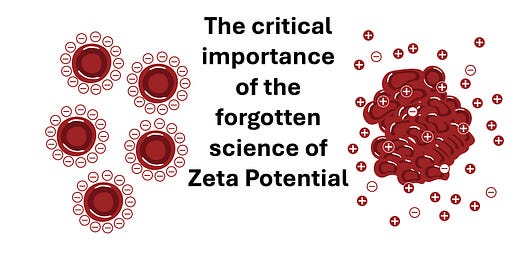









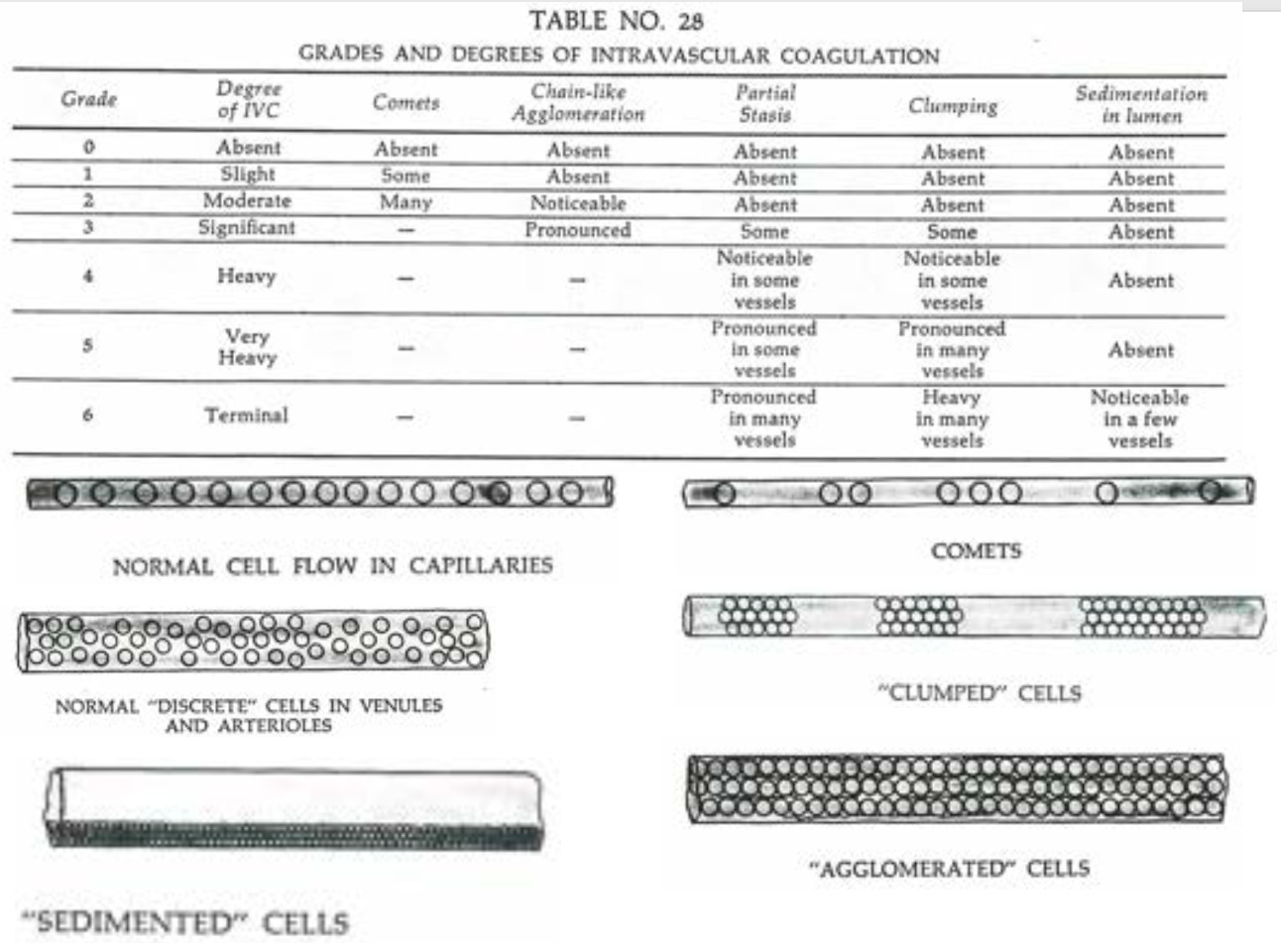



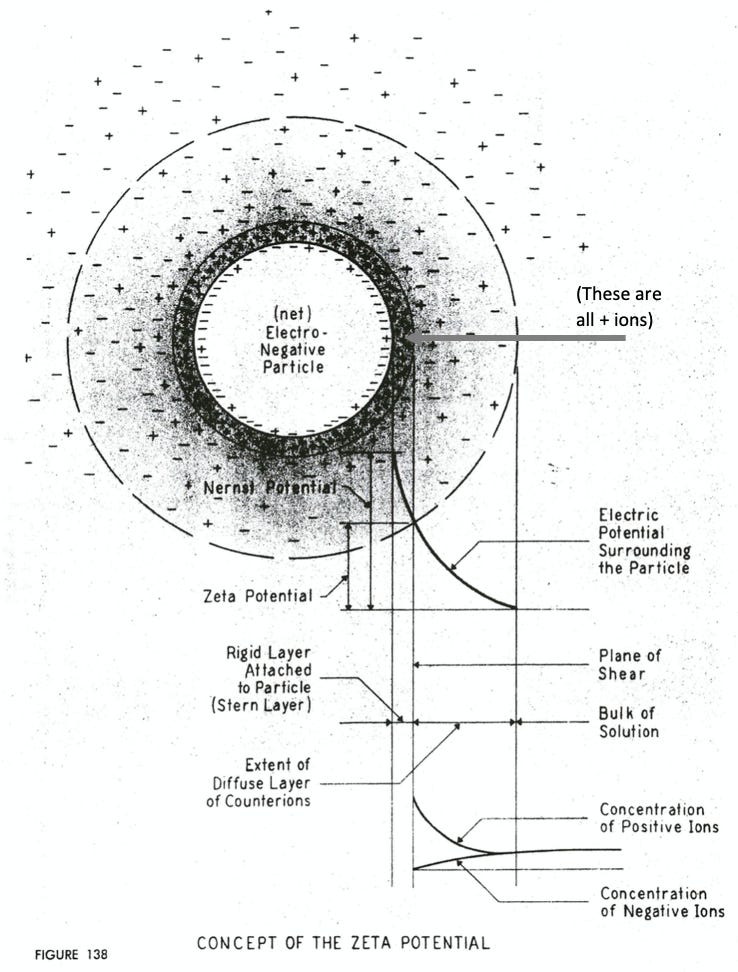

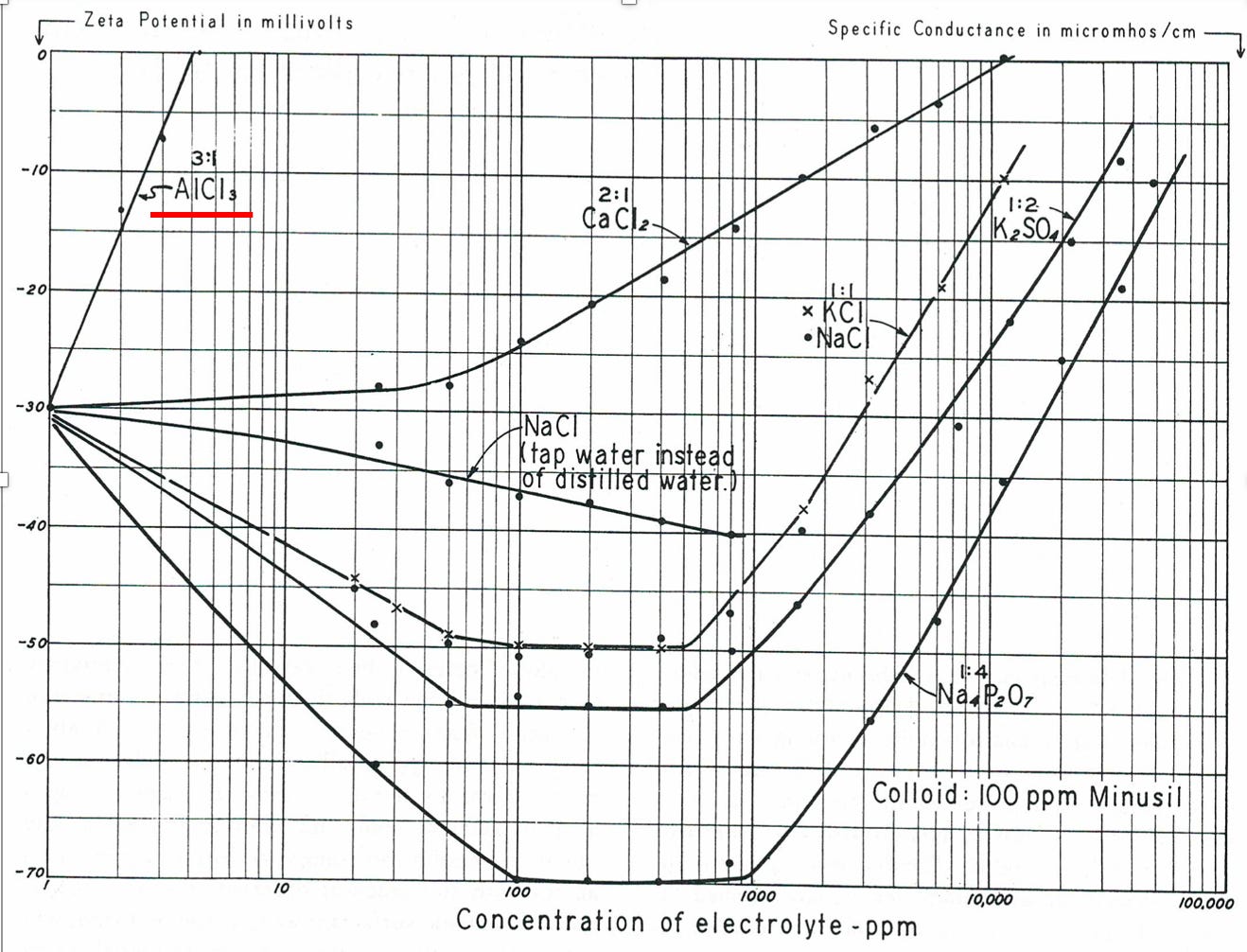










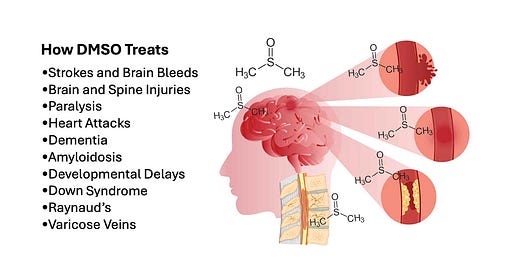

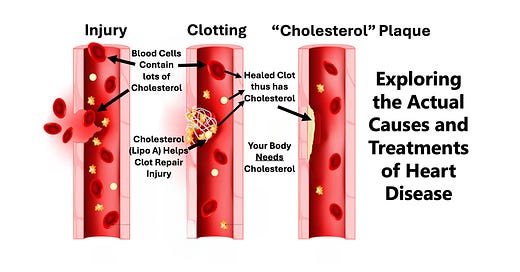

I met Andrew Moulden , PhD many years ago and was taken back then he knew who I was and said I was one of his heros. The irony was he was one of mine. I assume he was murdered. I have treated babies with strokes post vaccination.. even a middle meningeal artery stroke in a 4 month old just after the 4 month jabs. Treated with hyperbaric oxygen - it spared the parents from ever knowing the damage that stroke did to that infant, because the brain was healed and neovascularization took place, which is one of the near-magic things HBOT can do.
I have been working on my Zeta Potential for about 10 months now, and experience much more energy than I had before. I offer samples to friends. Some have adopted it, most have not. I downloaded Riddick's manuscript, and am doing my best to eliminate aluminum from my life. Thanks for sharing this information, I really appreciate it!!!!